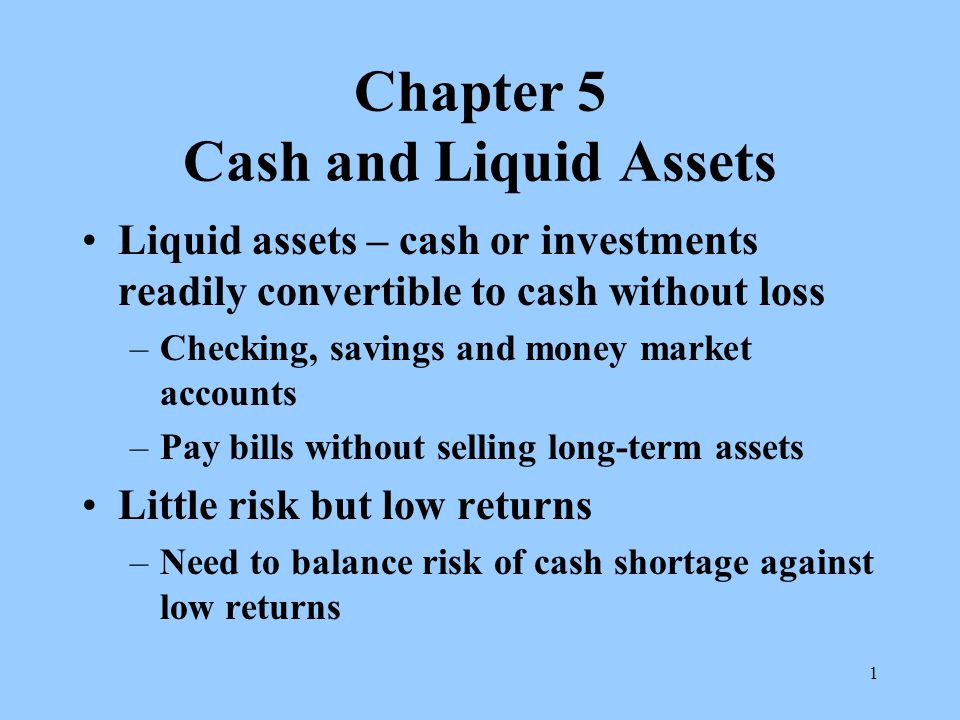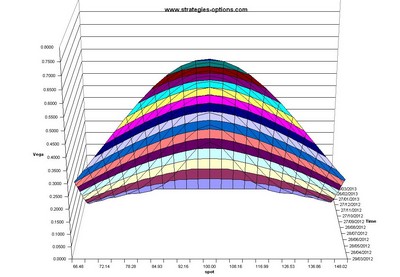
To better understand how government spending might affect GDP, it is helpful to consider how it would affect each component of the identity. In simple cases, it’s obviously better to use a modulator than a multiplier, but how do we define simple? If banks are lending more than their reserve requirement allows, then their multiplier will be higher, creating more money supply. If banks are lending less, then their multiplier will be lower and the money supply will also be lower. Moreover, when 10 banks were involved in creating total deposits of $651.32, these banks generated a new money supply of $586.19, for a money supply increase of 90% of the deposits. In economics, and macroeconomics especially, we rarely, if ever, observe a true natural experiment.
- I could imagine some case in which it makes sense to do something “less EA” (in the sense that fewer people in EA think it’s valuable) because it’s actually “more EA” (in the sense that it’s actually more valuable for maximizing impact).
- This would translate to more income for workers, more supply, and ultimately greater aggregate demand.
- A key question for whether there are strongly superlinear returns seems to be the speed at which reality moves.
- Many economists believe that capital investments of any kind—whether it be at the governmental or corporate level—will have a broad snowball effect on various aspects of economic activity.
The multiplier effect is an economic term, referring to the proportional amount of increase, or decrease, in final income that results from an injection, or withdrawal, of capital. In effect, Multipliers effects measure the impact that a change in economic activity—like investment or spending—will have on the total economic output of something. The wealth effect can also be reduced if the tax burden is not evenly shared and households differ in their marginal propensity to consume.
Economists have determined that the economic multipliers for the…
In either case, it is likely that by the time a program goes into effect and the money is actually spent, the public was well-informed long before. Households and firms, being forward-looking, may alter their current behavior in anticipation of future events. Firms could ramp up orders of raw materials and hire more workers to get ready for a big contract; and those newly hired workers may begin buying more goods with the new wage income. Over the past several years, attention has focused on the dangers of medium- and long-run imbalances in government budgets. This was less the case at the beginning of the recent financial crisis, when the question was if and how the government should try to stimulate the economy.

One could think that by keeping only the unconditional convergence, a bigger class of operators can be utilized, with still convenient properties. The magnitude of the wealth effect will be governed by how much total lifetime income is expected to decline. In a benchmark scenario (the so-called Ricardian equivalence case), households fully offset new government spending by reducing consumption one-for-one. This leaves them with more savings, which they hold back to cover the future tax increases.
Impact of Multiplier Effect
If banks loaned out all available capital beyond their required reserves, and if borrowers spent every dollar borrowed from banks, then the deposit multiplier and the money multiplier would be essentially the same. The last impact (induced impact) highlight the true benefit of multiple effects. Although a single individual received a tax benefit, many companies and their employees benefited. For example, imagine the individual dined at a restaurant and left a tip. That tip would now be the benefit of the waitstaff who may buy a crafted item at a local market and increase the income of a local artist.
The Cleveland Fed is part of the Federal Reserve, the central bank of the United States. With offices in Cleveland, Cincinnati, and Pittsburgh, we serve an area that comprises Ohio, western Pennsylvania, eastern Kentucky, and the northern panhandle of West Virginia. The goal of our work is to strengthen the economic performance of the nation and our region.

Each type of multiplier is individually defined and often has different metrics that define success. Very broadly speaking, most multipliers that are high indicate higher economic output or growth. For example, a higher money multiplier by banks often signals that currency is being cycled through an economy more times and more efficiently, often leading to greater economic growth. Economists and bankers often look at a multiplier effect from the perspective of banking and a nation’s money supply. This multiplier is called the money supply multiplier or just the money multiplier. The money multiplier involves the reserve requirement set by the Federal Reserve, and it varies based on the total amount of liabilities held by a particular depository institution.
student asked the same question on Filo
Our completely redesigned Money Museum is free and open to the public with new exhibits to learn about the history of money, cybersecurity, cash operations, and much more. Economists could offer little in the way of clarification, with venerated scholars falling on both sides of the debate. This failure of economists to agree on the issue leads some in the public to suppose that economists are incompetent, or perhaps worse, politically motivated.
Some CPUs, such as Athlon 64 and Opteron, handle main memory using a separate and dedicated low-level memory bus. The equity multiplier is a commonly used financial ratio calculated by dividing a company’s total asset value by total net equity. Companies finance their operations with equity or debt, so a higher equity multiplier indicates that a larger portion of asset financing is attributed to debt. The equity multiplier is thus a variation of the debt ratio, in which the definition of debt financing includes all liabilities. A multiplier may occur in a variety of ways, impacting different instruments or balances.
Warzone Season 5 patch notes: Signal 50 sniper rifle unexpectedly escapes a nerf – The Mirror
Warzone Season 5 patch notes: Signal 50 sniper rifle unexpectedly escapes a nerf.
Posted: Wed, 02 Aug 2023 15:41:00 GMT [source]
Typically, this is the model’s interest rate, which may be nominal or real (adjusted for inflation), depending on the ingredients in the model. When the interest rate moves up, households save more and consume less. A higher interest rate also encourages more labor since it provides more income for saving. Whether the interest rate increases or decreases in response to a government spending change varies from model to model.
How Does the Multiplier Effect Fit Into Keynesian Economics?
This improves the CPU performance by relying on internal cache memories or wide buses (often also capable of more than one transfer per clock cycle) to make up for the frequency difference. In computing, the clock multiplier (or CPU multiplier or bus/core ratio) sets the ratio of an internal CPU clock rate to the externally supplied clock. A CPU with a 10x multiplier will thus see 10 internal cycles which of the given multipliers will cause (produced by PLL-based frequency multiplier circuitry) for every external clock cycle. For example, a system with an external clock of 100 MHz and a 36x clock multiplier will have an internal CPU clock of 3.6 GHz. The deposit multiplier is frequently confused or thought to be synonymous with the money multiplier. However, although the two terms are closely related, they are not interchangeable.
- Then, he is exposed to some ideas in longtermism and decides to instead work on AI policy instead (because he thinks it seems like a big deal and is probably more important than economic policy).
- The latter is, in particular, important for the numerical solution of operator equations, see e.g. [15,16].
- One must also consider the effect on the left-hand side of the aggregate resource constraint, the supply side.
- But living permanently in DC forecloses an entire path through which you could have impact, i.e. getting elected to federal office.
In this case, the government mechanically raises tax revenues or issues new debt to cover its expenditures in each period. Typical expenditures are transfers to households, payments on outstanding debt, and spending on consumption or investment goods. Only this final activity constitutes “government spending,” and often in models it is set by the researcher and is not determined by interactions of the other parts of the model. If we assume that the signal contains a single frequency, f1, or a more complex signal spread across the band from f1 to f2, we can analyze the output spectrum of our modulator, as shown in the following diagrams. Assume a perfectly balanced modulator without signal leak, carrier leak, or distortion, so that the input, carrier, and spurious products do not appear in the output.
Products
I vaguely remember Julia Wise having children due to some combination of (a) non-EA goals, and (b) not having kids would make her sad, potentially reducing productivity. Maybe for some, having kids makes life meaningful and gives them something to fight for in the world, which would increase their impact. The EA community is probably a good way to find multipliers and a useful signal for what is valuable, but it is not the final goal at all and doesn’t have all the answers. The fiscal multiplier is the ratio of a country’s additional national income to the initial boost in spending or reduction in taxes that led to that extra income. For example, say that a national government enacts a $1 billion fiscal stimulus and that its consumers’ marginal propensity to consume (MPC) is 0.75. Consumers who receive the initial $1 billion will save $250 million and spend $750 million, effectively initiating another, smaller round of stimulus.
Note that the fractions 1/3, 1/5, and 1/7 refer to the amplitudes, not the frequencies. When Φ and Ψ are Bessel sequences for ℋ, and m ∈ ℓ∞, then Mm,Φ,Ψ is unconditionally convergent on ℋ [2]. They have been investigated for Gabor frames [6–8], for fusion frames [9], for generalized frames [10], for p-frames in Banach spaces [11] and continuous frames [12]. The concept of multipliers is naturally related to weighted frames [13,3] as well as to matrix representation of operators [14]. The latter is, in particular, important for the numerical solution of operator equations, see e.g. [15,16]. Other applications of multipliers are also possible, in particular in acoustics.
“It’s very difficult to take an arbitrary project that you’re excited about for other reasons, and tweak it to make it the most maximally impactful project you could be working on.” This doesn’t hold if the set of multipliers includes 1.5x, for example. Unfortunately because of spam with embedded links (which then flag up warnings about the whole site on some browsers), I have to personally moderate all comments.
This paper and its data are subject to revision; please visit clevelandfed.org for updates. James Bryant was a European applications manager at Analog Devices from 1982 to his retirement in 2009 and he still writes and consults for the company. He holds a degree in physics and philosophy from the University of Leeds and is also C.Eng., EurEng., MIET, and an FBIS. In addition to his passion for engineering, James is a radio ham and holds the call sign G4CLF.